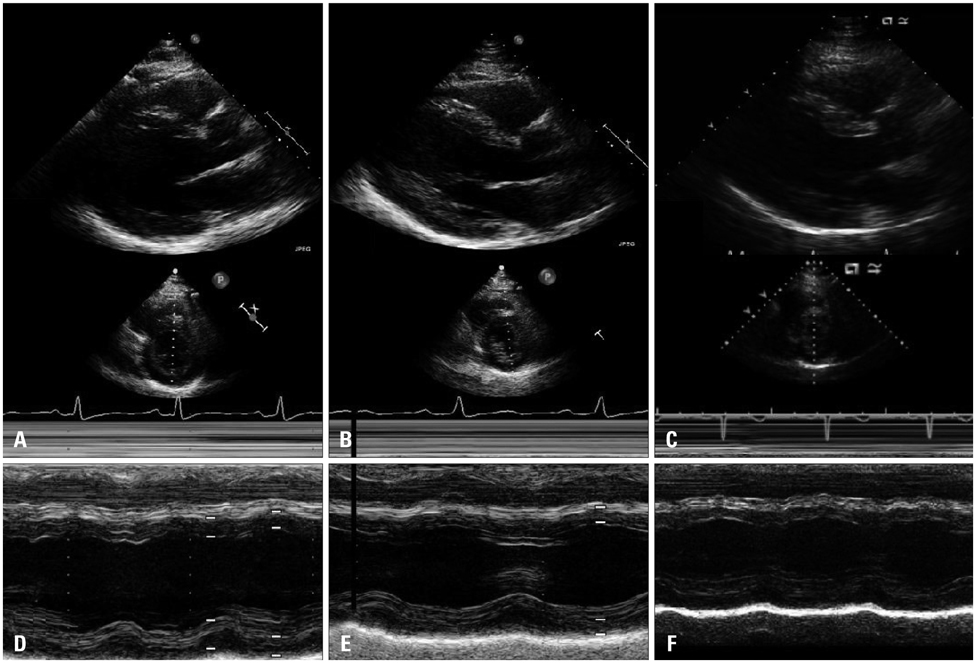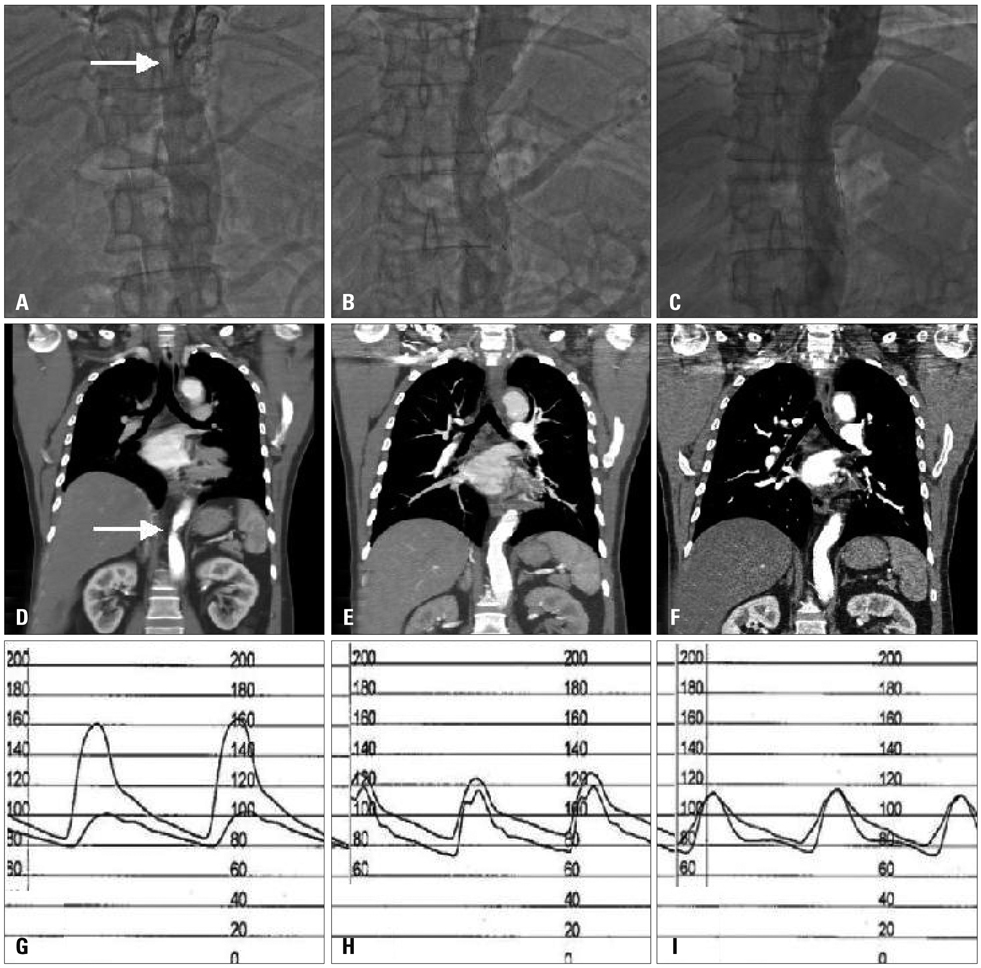J Cardiovasc Ultrasound.
2011 Sep;19(3):144-147. 10.4250/jcu.2011.19.3.144.
Hypertensive Heart Failure Associated with Middle Aortic Syndrome Reversed Dramatically by Endovascular Management
- Affiliations
-
- 1Division of Cardiology, Department of Internal Medicine, Kyung Hee University Medical Center, Seoul, Korea.
- 2Division of Cardiology, Department of Internal Medicine, Gwangju Veterans Hospital, Gwangju, Korea. kvhwkim@chol.com
- KMID: 1980369
- DOI: http://doi.org/10.4250/jcu.2011.19.3.144
Abstract
- A 42-year-old male patient presented with refractory hypertension and congestive heart failure. He had taken hydrochlorthiazide 50 mg, carvedilol 25 mg, diltiazem 180 mg, and losartan 100 mg per day. Aortogram revealed a severe luminal narrowing in the distal thoracic aorta with a peak systolic pressure gradient of 60 mmHg across the lesion. Endovascular management was performed with 22 x 80 mm self-expandable Nitinol-S stent after predilation with 10 x 40 mm balloon. After endovascular management, the patient's blood pressure, left ventricular ejection fraction (LVEF) and dilated LV dimension were remarkably improved.
Keyword
MeSH Terms
Figure
Reference
-
1. Harrison DA, McLaughlin PR, Lazzam C, Connelly M, Benson LN. Endovascular stents in the management of coarctation of the aorta in the adolescent and adult: one year follow up. Heart. 2001. 85:561–566.
Article2. Mahadevan V, Mullen MJ. Endovascular management of aortic coarctation. Int J Cardiol. 2004. 97:Suppl 1. 75–78.
Article3. Bergamini TM, Bernard JD, Mavroudis C, Backer CL, Muster AJ, Richardson JD. Coarctation of the abdominal aorta. Ann Vasc Surg. 1995. 9:352–356.
Article4. Fuster V, Alexander RW, O'Rourke RA. Hurst's the heart. 2001. 10th ed. New York: McGraw Hill;2390.5. Kim W, Jeong MH, Shim WH, Ahn YK, Kang JC. A successful stenting of the coarctation of aorta in a patient presented with acute pulmonary edema. Int J Cardiol. 2006. 113:267–269.
Article
- Full Text Links
- Actions
-
Cited
- CITED
-
- Close
- Share
- Similar articles
-
- Periodic Surveillance and Medical Management of Thoracic Aortic Aneurysm
- The Complications and Their Management after Endovascular Aneurysm Repair for the Treatment of Abdominal Aortic Aneurysms
- Anesthetic Management of Endovascular Stent Graft Placement for Thoracic Aortic Diseases: A case report
- Retrograde Aortic Dissection after Thoracic Endovascular Aortic Repair for Descending Aorta: 2 case reports
- Ruptured Abdominal Aortic Aneurysm with Antecedent Endovascular Repair of Abdominal Aortic Aneurysm




